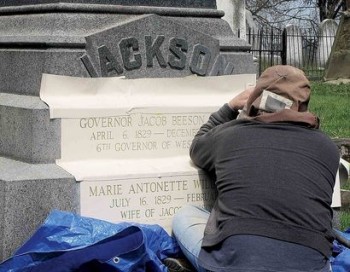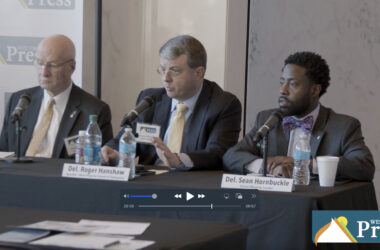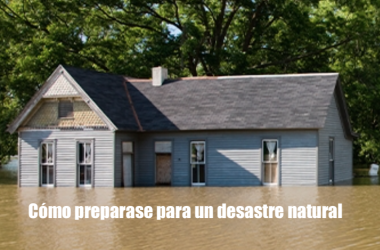
Keith Mundy uses a sandblaster to engrave the tombstone for Jacob Beeson Jackson at Riverview Cemetery to include his wife Marie Antoinette Willard Jackson, who also is buried there in the Riverview Cemetery.
PARKERSBURG, W.Va. — The wife of a prominent figure is forever engraved in the history of Wood County, literally.
The tombstone of Jacob Beeson Jackson at the Riverview Cemetery on Juliana Street on Wednesday was engraved to include his wife, Marie Antoinette Willard Jackson, who also is buried there.
Her name was never on the monument, said Cindy Buskirk, a member of the Wood County Historical Landmarks Commission who has organized the efforts to preserve the historical cemetery.
Jackson died in 1893 and Marie, who was born in 1829, died in 1910.
“The main reason for doing this was to get Marie Antoinette’s name on the marker,” Buskirk said.
Wednesday was Jacob Jackson’s birthday.
He was born April 6, 1829, in Parkersburg, and was the sixth governor of the state of West Virginia. His father, John J. Jackson Sr., was a cousin of the Confederate Gen. Stonewall Jackson.
Jackson, who died Dec. 11, 1893, first practiced law in St. Marys in 1852. He was a prosecuting attorney in Pleasants and Wood counties, served a term in the House of Delegates and was mayor of Parkersburg in 1879.
Marie was born July 16, 1829, in Pleasants County and died Feb. 27, 1910, the daughter of Benjamin and Betsy Neale Willard. She was the last wife of a governor who served in Wheeling as the capital was moved for the last time to Charleston.
The Jacksons returned to Parkersburg at the end of his term as governor.
She was connected with prominent families in West Virginia and Massachusetts and was a devout Episcopalian.
“The announcement of her death will carry sorrow into many homes where she was admired,” said a newspaper article about her passing in 1910.
The Kirby Monument Co. and Pennsboro Ritchie Memorials, with the three-man crew of Frank Hall, Jeff Grant and Keith Mundy, engraved the granite stone upon which the main obelisk sits. The engravings denote Jackson was governor and the dates of his birth and date and, for his wife, denotes she was the wife of the governor and her birth and death.
“That is a granite that is no longer available,” Hall said of the base stone upon which the massive monument sits atop.
The quarry from where the granite came, probably Massachusetts, has been mined out, he said. The appearance of granite depends on the geographic region from where it was quarried and the minerals that make up its composition, Hall said.
“I’ve always been told this is called Quincy Granite,” Hall said.
The monument is made entirely of the same stone, but is black when polished and is a lighter gray in its unpolished state, he said.
Care was taken to make sure the stencils were straight prior to the actual sandblasting. It is important that the stencils are straight, Hall said.
Many historical figures in Wood County are buried at the Riverview Cemetery, which is on the National Register of Historic Places. Among those are Sen. Peter Van Winkle, who cast the vote that prevented the impeachment of President Andrew Johnson; William Erskine Stevenson, the third governor of West Virginia; Union and Confederate soldiers in the Civil War; members of the Cook family, and Norton Upson, a soap maker whose formula became Ivory Soap.
The cemetery was originally called the Cook Cemetery established by the family of Capt. Joseph Cook, who purchased the land in 1797. The historic Cook House on Murdoch Avenue, below the cemetery, was built by the family.
Buskirk, the historian of the cemetery, has been planning the project that was originally scheduled to be done last month when the weather was unseasonably warm and dry, but was postponed when bad weather interrupted the pleasant days. She is excited.
“Oh my goodness. I wanted it so bad to be done last month because it was Women’s History Month,” Buskirk said.
To read more from the Parkersburg News and Sentinel, subscribe here.





